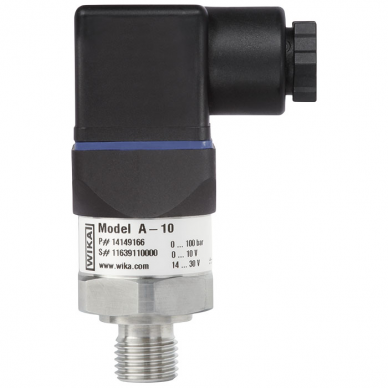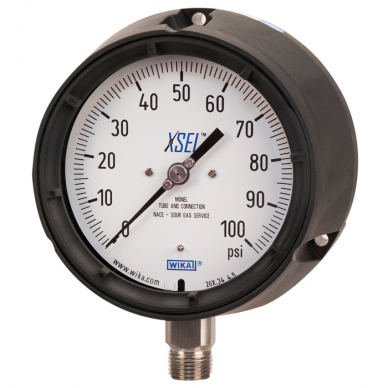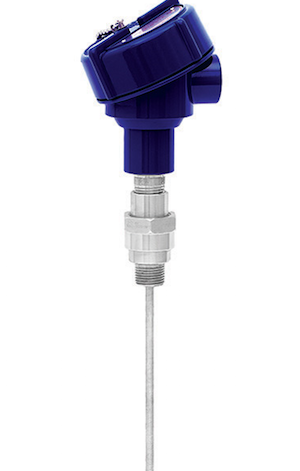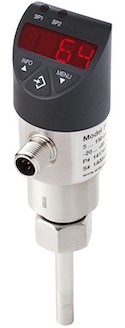
Measuring instruments monitor and control the pumps used to move fluids in industrial applications. High-quality gauges and sensors – for measuring pressure, temperature, flow, and more – optimize safety and efficiency in municipal water treatment plants.
A variety of pressure gauges and temperature sensors help plant operators monitor the health and efficiency of pumps in water treatment facilities. The instruments must be robust, as pumps work nonstop and create significant vibrations and shocks that can damage standard gauges. Pumps also operate in challenging conditions:
- High humidity
- Corrosive, abrasive, viscous, and clogging media
- Wide pressure variations
- Wide temperature variations
An easy and cost-effective way to monitor pumps is to install sensors and transmitters at critical points. By spending a few hundred dollars on measuring instruments, municipal water treatment facilities can protect an expensive pump from serious harm caused by cavitation, dry running, and other incidents.
Pressure Instruments for Wastewater Pumps
Pressure gauges and sensors at suction and discharge nozzles, delivery pipes, release valves, control circuits, and other locations on a pump help monitor the equipment’s condition and ensure that it’s operating properly.

A-10 pressure transmitter for general industrial applications
Pressure at the suction side, to prevent cavitation
Cavitation is the generation of vapor bubbles, which occur in high-velocity liquids. When these bubbles collapse, the result is pressure spikes. Cavitation can also occur if the local pressure drops below the vapor pressure of the liquid and then rises above it. To avoid this condition, the net possible suction head available (NPSHa) has to be greater than the net possible suction head required (NPSHr).
Monitoring the suction head (pressure in terms of the water column) can help identify problems that damage pumps. The A-10 pressure transmitter features a piezoelectric sensor or thin-film technology, making it highly resistant to pressure spikes and vibration. It has an all-welded stainless steel measuring cell and does not need any soft sealing. A variety of available electrical process connections meets the requirements of almost any application.
Pressure at the discharge side, to ensure proper operations

XSEL® process gauge
Both underpressure and overpressure on the outlet side reduce a power plant’s efficiency. All XSEL® models – 21X.34, 23X.34, and 26X.34 – feature a Bourdon tube design and movement with hardened components that reduce stress and wear. The innovative XSEL® process pressure gauge exceeds pressure gauge performance testing standards ASME B40.100 and EN 837-1. And it’s safer, too: The XSEL® has a fire-resistant case according to flammability rating UL 94, V-0 test procedures.
XSEL® process pressure gauge movements are Swiss-made, producing one of the most precise and reliable movements available today. WIKA’s industry-best warranty on all XSEL® process pressure gauges include a standard five-year warranty on the pressure gauge and a 10-year warranty on the pressure system. The XSEL® process gauge sets a standard of value as well: It is an economical solution for most processing applications since it reduces downtime from having to regularly replace worn-out instruments.
Differential temperature and pressure between the suction and the discharge fluid, to assess pump efficiency

TR10 RTD sensor
To make sure a pump is working at optimal capacity, technicians can place highly accurate temperature sensors and pressure transmitters at both the suction and discharge sides. If the pump isn’t operating as efficiently as it can be, there will be a drop in pressure and temperature. This is thermodynamic monitoring, which does not require measuring the actual flow rate to determine efficiency.
The A-10 pressure transmitter is precision-engineered for excellent performance. The standard model has a non-linearity (BFSL) of ≤±0.5% of span, and there’s an option for ≤±0.25% of span. This versatile and rugged transmitter can withstand a wide range of temperature and pressure conditions, as well as the extreme shock and vibrations found in power plants.
The TR10 series of RTD sensors can be mounted into a thermowell, or directly into the process with a spring-loaded compression fitting for easy installation and replacement. The TR10 has the option of a transmitter to convert the resistance signal into an analog or a digital output, which can be easily customized to a variety of conditions.
Differential pressure at filters and strainers, to assess debris accumulation
If pressure drops at the discharge side, that’s a good indication the strainer or filter needs to be cleaned or replaced. Monitoring the pressure differential between the inlet and outlet of a pump can also indicate overall efficiency and help identify conditions where cavitation is likely to occur.
The SP007 differential pressure transducer is fully configurable. Users have a choice of six pressure ports, five electrical connections, and a voltage or current output to match the needs of their applications. The SP007 has a standard accuracy of 0.25% and an optional high accuracy of 0.1%.
Temperature Instruments for Wastewater Pumps
Resistance thermometers (RTDs) on pumps and motors help detect temperature changes that can warn operators of potentially dangerous and costly issues.
Temperature at the bearings, to prevent overheating
A change in the bearing temperature of a pump and/or motor can indicate a developing failure or a change in loading. The compact TR58 bearing RTD sensor is designed for areas where space is an issue. It uses thin-film technology and responds extremely fast. With no moving parts, it is vibration-resistant and perfect for measuring temperature in thrust bearing plates, shafts, and motor windings. The TR58 can be spring loaded into the bearings’ housing or held in position with a high temperature epoxy resin.
FSD-4 flow sensor
Flow Instruments for Wastewater Pumps
A pump is “dry running” – in a nearly empty pipe condition – when the suction side doesn’t receive enough fluid. When the pump operates with no flow at all, it is “dead-headed.” Both conditions can cause the pump to overheat and fail.Flow at the suction side, to signal low fluid levels
Wireless Sensors for Predictive Monitoring and Maintenance

Wireless sensors for pump and motor monitoring
Wireless sensors are fast to install and do not require pulling wires or conduit to add additional sensing capabilities for predictive maintenance. Wireless motor and pump monitoring sensors typically offer a combination of vibration, temperature, pressure, and electric current draw. A change greater than 50% above the baseline readings is an effective predictor of future failure, giving the operator several weeks of advance notice.
Wireless motor and pump monitoring
Wireless sensors can support multiple sensors – vibration, temperature, electric current draw – with one transceiver node.
Leap Sensors for wireless pressure and temperature monitoring

Leap Sensors for temperature (left) and pressure monitoring
Wireless sensors can power and interface with standard industrial pressure transducers, thermocouples, and PRT/RTD temperature sensors.
WIKA, Smart Sensors for Municipal Water Treatment Facilities
WIKA is a leader and trusted partner for measurement solutions in wastewater treatment plants, and our product specialists understand the vital role that pumps play in municipal facilities. Contact us to help you select the right pressure and temperature instruments that will maximize the efficiency and prolong the service life of industrial pumps.
Products mentioned in this article:
• A-10 pressure transmitter
• 21X.34,23X.34, and 26X.34 XSEL® process gauges
• TR10-0, TR10-2, TR10-3, TR10-4, TR10-AVG/TR15-AVG, TR10-B, TR10-C, and TR10-D industrial resistance thermometers
• TR58 bearing RTD sensor
• FSD-4 electronic flow sensor
• Leap wireless sensors


I find the article very informative on Water Pumps